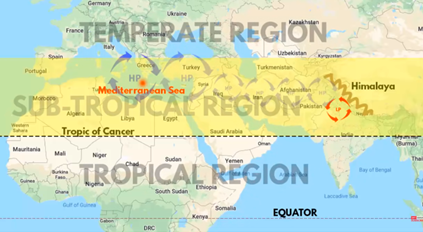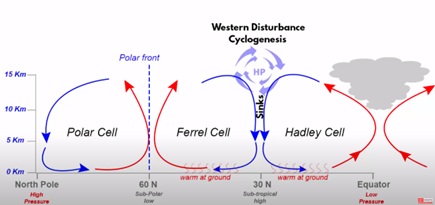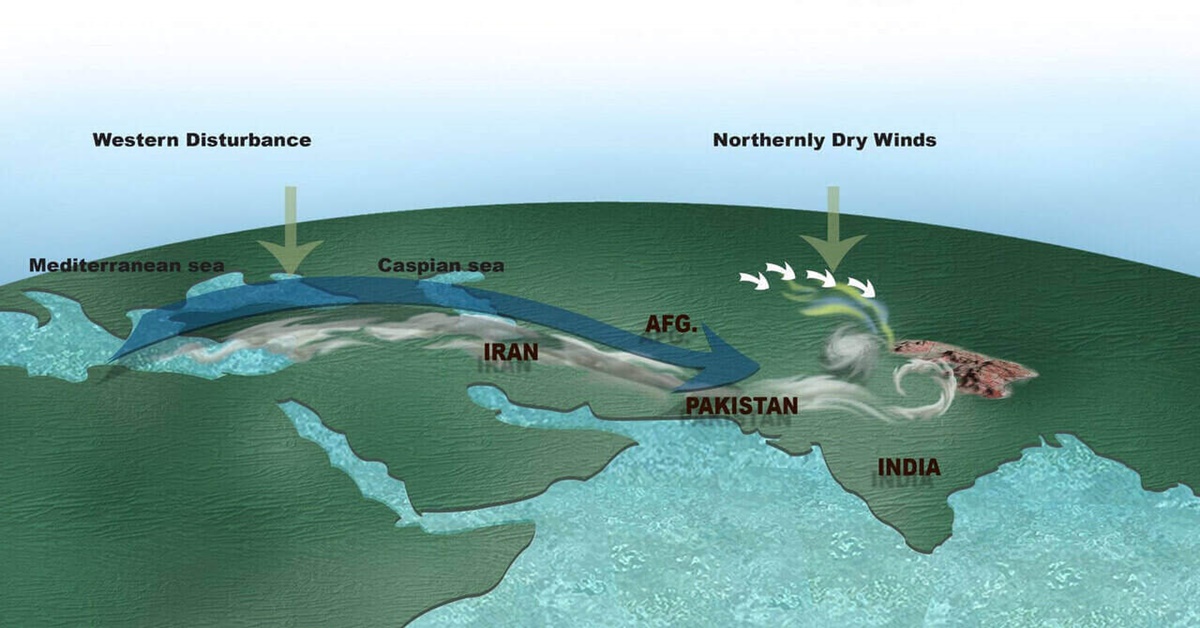Western – originate in the Mediterranean region (the Mediterranean Sea, the Caspian Sea, and the Black Sea) and travel over Iran, Iraq, Afghanistan, and Pakistan before they reach NW India where they get blocked by the Himalayas.
Disturbances – interruption, trouble, or concern (rain, landslide, floods, etc.)
Western Disturbance is an extratropical storm. It is a non-monsoonal precipitation pattern driven by the westerlies. The extratropical storm is a global phenomenon with moisture usually carried in an upper atmosphere, unlike tropical storms where moisture is carried in the lower atmosphere.
Western disturbances are important for the development of the Rabi crop (wheat, barley, mustard, sesame, and peas).

Development of Western Disturbances
The high-pressure area over Ukraine and neighboring areas consolidates causing intrusion of cold air from polar regions towards an area of relatively warmer air with high moisture. This generates a favorable condition for Cyclogenesis. Cyclogenesis (development or strengthening of cyclonic circulation – a low-pressure area) in the upper atmosphere promotes the formation of eastward-moving extratropical depression. Western disturbances travel at speeds up to 43km/h. They are embedded in the mid-latitude subtropical westerly jet stream.

Significance of Western Disturbances
As mentioned earlier they are more prominent in winters and bring moderate to heavy rain in low-lying areas and heavy snow to mountainous areas of the Indian Subcontinent. Four to five western disturbances form during the winter season and are usually associated with a cloudy sky, higher night temperatures, and unusual rain. Although good in moderation but excessive precipitation due to western disturbances can cause crop damage, landslides, floods, and avalanches. The interaction of the monsoon trough with western disturbances may occasionally cause dense clouding and heavy precipitation. The 2013 North India floods, which killed more than 5000 people in 3 days, are said to be a result of one such interaction.
The strongest western disturbances usually occur in the northern parts of Pakistan, where flooding is reported several times during the winter season.
Western disturbances start declining in numbers after winter. During the summer months of April and May, they move across north India. The southwest monsoon current generally progresses from east to west in the northern Himalayan region, unlike western disturbances which follow west to east trend in north India with a consequent rise in pressure carrying a cold pool of air.


